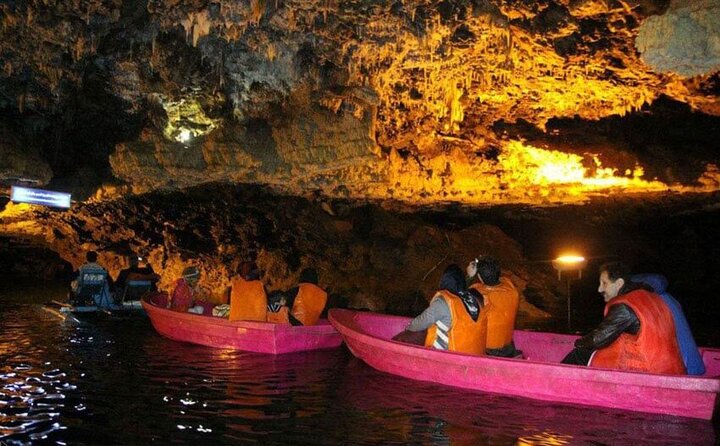Tourism minister calls for five-year development plan for Ali-Sadr Cave

TEHRAN – The Cultural Heritage, Tourism, and Handicrafts Minister Seyyed Reza Salehi-Amiri has emphasized the need to develop a five-year plan for the tourism and maintenance of Ali-Sadr Cave, a vast water-filled cavern believed to date back to the Jurassic era.
Salehi-Amiri made these remarks on Thursday on the sidelines of his visit to the cave and its surroundings in Hamedan province.
He stressed that the proposal should be prepared by the Hamedan provincial government, in collaboration with the prudential tourism department and with the involvement of the area's representative in the Iranian parliament and other relevant bodies.
Salehi-Amiri also highlighted the importance of including nearby villages and towns in the development process, stating, “The residents should benefit from the economic opportunities generated by the cave, and decisions should be made transparently within a provincial working group.”
Elsewhere in his remarks, the minister underlined the significance of proper conservation to prevent environmental damage to the cave, a popular tourist destination. “It is crucial that both locals and tourists benefit from the revenue generated by the cave, alongside provincial funding,” he added.

Salehi-Amiri also called for careful scrutiny of the cave's tourism management contracts, including any potential renewals or changes in contractors. “The details regarding the duration, renewal terms, and possible transfer of management to new contractors must be determined by the working group in Hamedan,” he explained.
Ali-Sadr Cave, known for its extensive network of water-filled passages, draws thousands of visitors each year and is regarded as one of the world's largest water caves.
According to available data, Ali-Sadr Cave was Hamedan province’s most popular destination, welcoming 566,000 visitors during the first six months of the Iranian calendar year (started on March 20).
The cave embraces a huge matrix of sunless channels, ponds, grottoes, and water passages which are stretched along with imposing rock formations and stalactite-covered tops in a span of several kilometers. The entrance to the lengthy cave is situated some 70km north of Hamadan, the provincial capital.
AM
Leave a Comment